|
|

|
Porsche, and the Porsche crest are registered trademarks of Dr. Ing. h.c. F. Porsche AG.
This site is not affiliated with Porsche in any way. Its only purpose is to provide an online forum for car enthusiasts. All other trademarks are property of their respective owners. |
|
|
  |
| r_towle |
 Nov 28 2022, 08:58 PM Nov 28 2022, 08:58 PM
Post
#1
|
|
Custom Member                Group: Members Posts: 24,705 Joined: 9-January 03 From: Taxachusetts Member No.: 124 Region Association: North East States 
|
Lots of sheet metal body welding, flares, patching, several cars.
I did use a mig for years, upgraded to gas mig. My son took it. So, I’m getting another welder. I still have a gasless mig, and a scratch start tig Neither are very good. So, which would you choose? Why? Willing to take the time and learn. Rich |
| Unobtanium-inc |
 Nov 28 2022, 09:26 PM Nov 28 2022, 09:26 PM
Post
#2
|
|
Advanced Member     Group: Members Posts: 2,346 Joined: 29-November 06 From: New York Member No.: 7,276 Region Association: None 
|
My Miller MIG died a few years ago and I upgraded to this one and man, it's impressive.
I haven't tried the TIG on it yet but will once I transfer the 550 build back to my shop in the next year or so. The HF welders are good machines, not cheap. We've been using them to repair the 550 tail and it's tricky because 60 year old aluminum and modern aluminum aren't always friends. I've been told the post WWII aluminum in Germany had a lot of Iron in it. https://www.harborfreight.com/welding/welde...nput-57812.html Attached thumbnail(s) 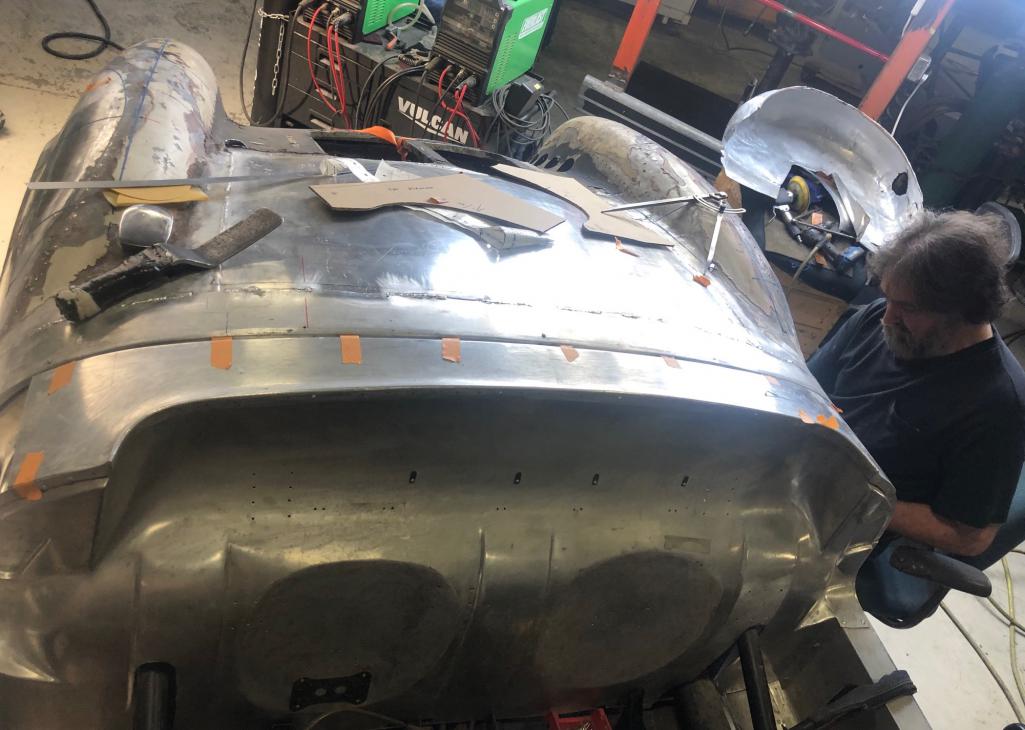 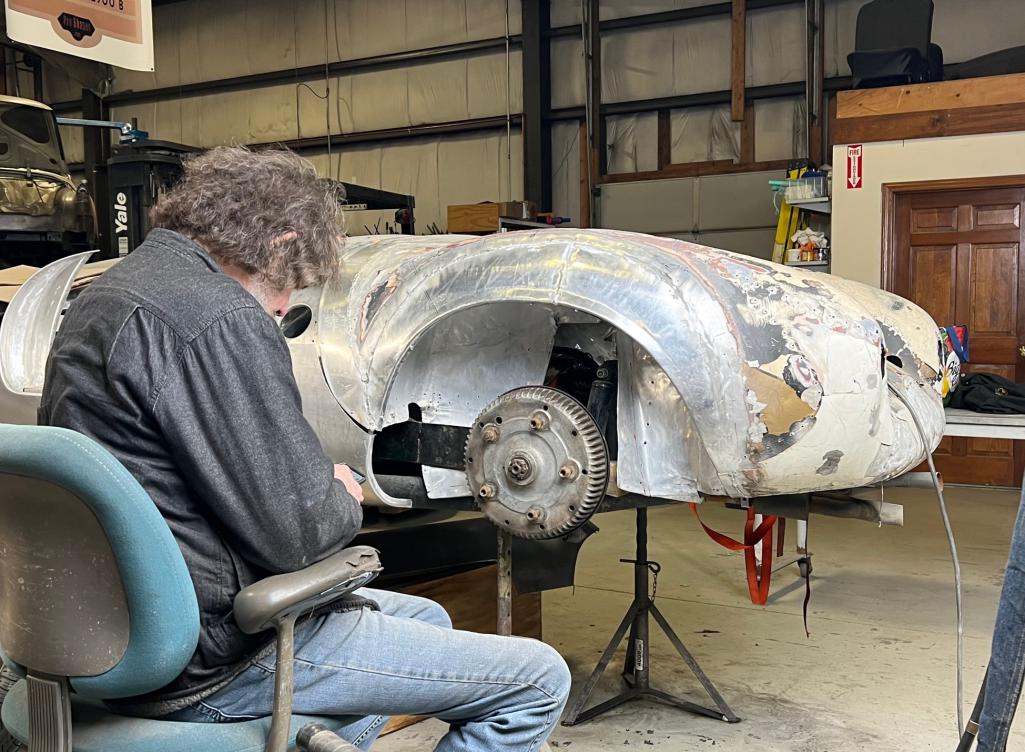 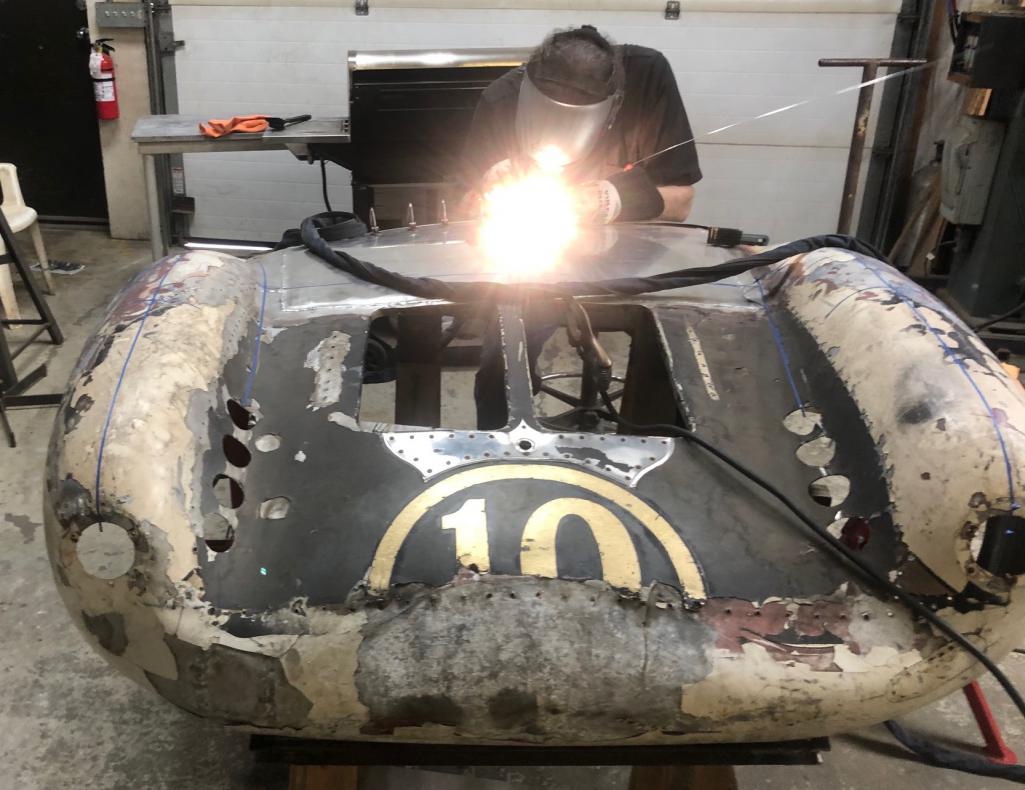
|
| Van B |
 Nov 28 2022, 09:34 PM Nov 28 2022, 09:34 PM
Post
#3
|
|
Senior Member    Group: Members Posts: 1,621 Joined: 20-October 21 From: WR, GA Member No.: 26,011 Region Association: None 
|
You had flux core wire then, just to confirm? Pretty much the only thing it could be when you say gasless MIG.
I’ll try to avoid giving an “it depends” answer even though it does lol… For me, I choose TIG because of the versatility and the fact that I worked as a welder to pay my way through school. However, for cars, you really can’t beat the simplicity of MIG formally known as GMAW (Gas Metal Arc Welding). Flux Core FCAW, is motorized stick welding really. Great on a budget and especially good for running lots of beads in the field. But, not as efficient on cars because of all the weld clean up you need to do. TIG can be difficult on cars when you’re working in tight spaces. And unless you’re very well practiced, you can easily put too much heat into panels. Modern MIG machines can make welding incredibly low threat. Inverters give great output power and allow for pre-intalled accurate programs to get you on target for the conditions of your weld; thickness of base metal, filler wire, etc. If you’re going to have one welder and it’s for garage type stuff, get a nice MIG. |
| Brett W |
 Nov 28 2022, 10:07 PM Nov 28 2022, 10:07 PM
Post
#4
|
|
Advanced Member     Group: Members Posts: 2,859 Joined: 17-September 03 From: huntsville, al Member No.: 1,169 Region Association: None 
|
Oxy Acetylene. It will take some time to learn the finesse, but it grinds easier, it hammers out easier and doesn't make a hard spot, plus its easier on tools.
It works on aluminum and steel, but it takes a bit of fine tuning. I have welded aluminum sheet, then hammered it to death in an attempt to break the weld or the panel. It hammered out nice and smooth. If you use base material you can actually polish the material and not see the weld. That said, I use MIG with gas (no other way to MIG weld sheetmetal) or TIG weld it. I haven't done any sheetmetal butt welds recently, but was told to use almost no shielding gas with the TIG welds, meaning no big cup, no shiney welds, etc. #4 or #5 cup, the weld will look terrible, but it will finish nicely as it doesn't get as hard as fully shielded weld. Will be testing this soon. Looking forward to testing this and then running it through my English wheel. |
| Rand |
 Nov 28 2022, 10:12 PM Nov 28 2022, 10:12 PM
Post
#5
|
|
Cross Member      Group: Members Posts: 7,413 Joined: 8-February 05 From: OR Member No.: 3,573 Region Association: None |
You know mig and tig are different animals. So this question is dumb without clarification.
|
| Rand |
 Nov 28 2022, 10:14 PM Nov 28 2022, 10:14 PM
Post
#6
|
|
Cross Member      Group: Members Posts: 7,413 Joined: 8-February 05 From: OR Member No.: 3,573 Region Association: None |
Respect to Brett. My dad made me weld my first exhaust with a torch. I wanted to just mig it. But doing it with a torch and rod was educational.
Tig is for not steel... other metals like aluminum and titanium and such. Duh we know that. |
| Brett W |
 Nov 28 2022, 10:29 PM Nov 28 2022, 10:29 PM
Post
#7
|
|
Advanced Member     Group: Members Posts: 2,859 Joined: 17-September 03 From: huntsville, al Member No.: 1,169 Region Association: None 
|
Respect to Brett. My dad made me weld my first exhaust with a torch. I wanted to just mig it. But doing it with a torch and rod was educational. Tig is for other metals like aluminum and titanium and such. Duh we know that. I have never really spent much time with an OA rig. Actually own one, but only use it for heating things. HAHA. Last year I was at a metal shaping event and did some Oxy Hydrogen welding on aluminum. Talk about crazy. They welded airplanes like that for decades. Anyway all these top level old school coach builders use O/A for the ease of metal shaping after the welding, especially since the welds aren't the focus when its all said and done. I need to practice a lot more. I use my TIG for steel, stainless, TI, aluminum, Silbronze, and even some Inconel. I do tend to use my MIG more for sheetmetal replacement in cars because it seems to tolerate the weld through primer better than the TIG, plus its easier to well the MIG around the shop, LOL |
| Rand |
 Nov 28 2022, 10:32 PM Nov 28 2022, 10:32 PM
Post
#8
|
|
Cross Member      Group: Members Posts: 7,413 Joined: 8-February 05 From: OR Member No.: 3,573 Region Association: None |
Respect to Brett. My dad made me weld my first exhaust with a torch. I wanted to just mig it. But doing it with a torch and rod was educational. Tig is for other metals like aluminum and titanium and such. Duh we know that. I have never really spent much time with an OA rig. Actually own one, but only use it for heating things. HAHA. Last year I was at a metal shaping event and did some Oxy Hydrogen welding on aluminum. Talk about crazy. They welded airplanes like that for decades. Anyway all these top level old school coach builders use O/A for the ease of metal shaping after the welding, especially since the welds aren't the focus when its all said and done. I need to practice a lot more. I use my TIG for steel, stainless, TI, aluminum, Silbronze, and even some Inconel. I do tend to use my MIG more for sheetmetal replacement in cars because it seems to tolerate the weld through primer better than the TIG, plus its easier to well the MIG around the shop, LOL Tig is an art. Much respect. |
| Brett W |
 Nov 28 2022, 10:36 PM Nov 28 2022, 10:36 PM
Post
#9
|
|
Advanced Member     Group: Members Posts: 2,859 Joined: 17-September 03 From: huntsville, al Member No.: 1,169 Region Association: None 
|
Respect to Brett. My dad made me weld my first exhaust with a torch. I wanted to just mig it. But doing it with a torch and rod was educational. Tig is for other metals like aluminum and titanium and such. Duh we know that. I have never really spent much time with an OA rig. Actually own one, but only use it for heating things. HAHA. Last year I was at a metal shaping event and did some Oxy Hydrogen welding on aluminum. Talk about crazy. They welded airplanes like that for decades. Anyway all these top level old school coach builders use O/A for the ease of metal shaping after the welding, especially since the welds aren't the focus when its all said and done. I need to practice a lot more. I use my TIG for steel, stainless, TI, aluminum, Silbronze, and even some Inconel. I do tend to use my MIG more for sheetmetal replacement in cars because it seems to tolerate the weld through primer better than the TIG, plus its easier to well the MIG around the shop, LOL Tig is an art. Much respect. After trying Gas welding, I have to say, its much harder. There is no pedal to dial the amperage back, its just a dance with the torch. However they say, "if you can gas weld, you can TIG weld". Apparently its not quite the same going backwards. (IMG:style_emoticons/default/welder.gif) |
| targa72e |
 Nov 28 2022, 11:25 PM Nov 28 2022, 11:25 PM
Post
#10
|
|
Member   Group: Members Posts: 288 Joined: 11-September 16 From: colorado Member No.: 20,392 Region Association: None 
|
I have all three. 90% of time for simple repair work or fab I go for the MIG. I have used the MIG for the initial stick parts together part (especially when it needs to be on teh car for fitment) then removed and TIG welded the rest. I have never tried to gas weld things together, but I do use it to take things apart.
john |
| Superhawk996 |
 Nov 29 2022, 12:18 AM Nov 29 2022, 12:18 AM
Post
#11
|
|
914 Guru      Group: Members Posts: 7,340 Joined: 25-August 18 From: Woods of N. Idaho Member No.: 22,428 Region Association: Galt's Gulch 
|
Duplicate
|
| Superhawk996 |
 Nov 29 2022, 12:49 AM Nov 29 2022, 12:49 AM
Post
#12
|
|
914 Guru      Group: Members Posts: 7,340 Joined: 25-August 18 From: Woods of N. Idaho Member No.: 22,428 Region Association: Galt's Gulch 
|
After trying Gas welding, I have to say, its much harder. There is no pedal to dial the amperage back, its just a dance with the torch. However they say, "if you can gas weld, you can TIG weld". Apparently its not quite the same going backwards. (IMG:style_emoticons/default/welder.gif) TIG is a lot easier if you can already gas weld. Done with Oxy Acetylene 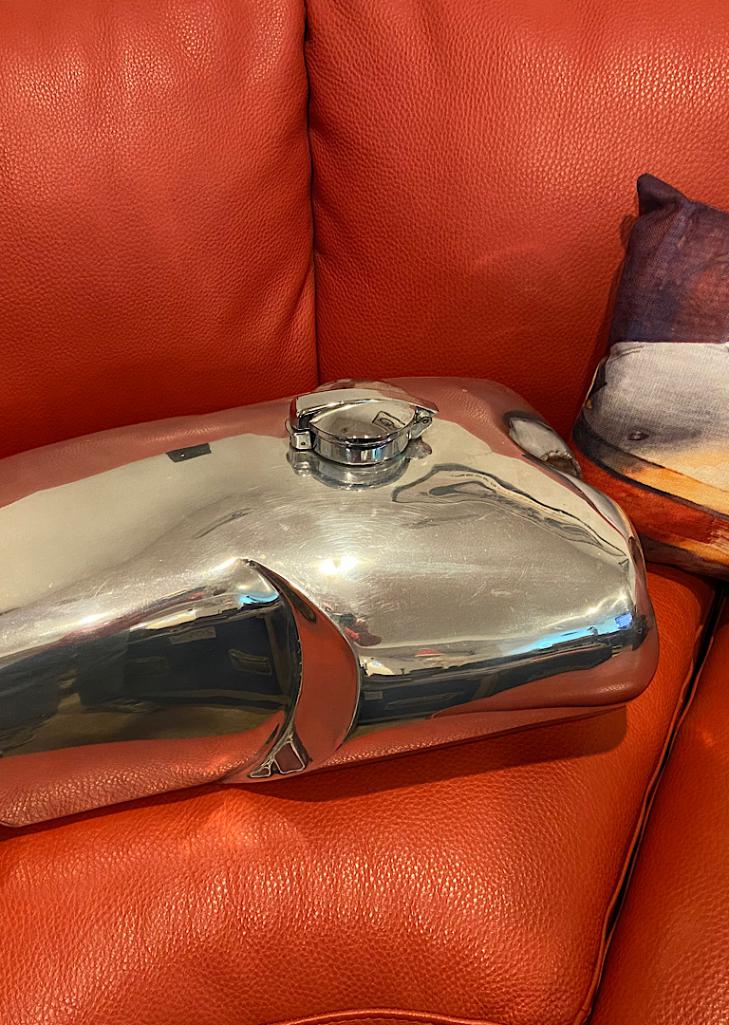 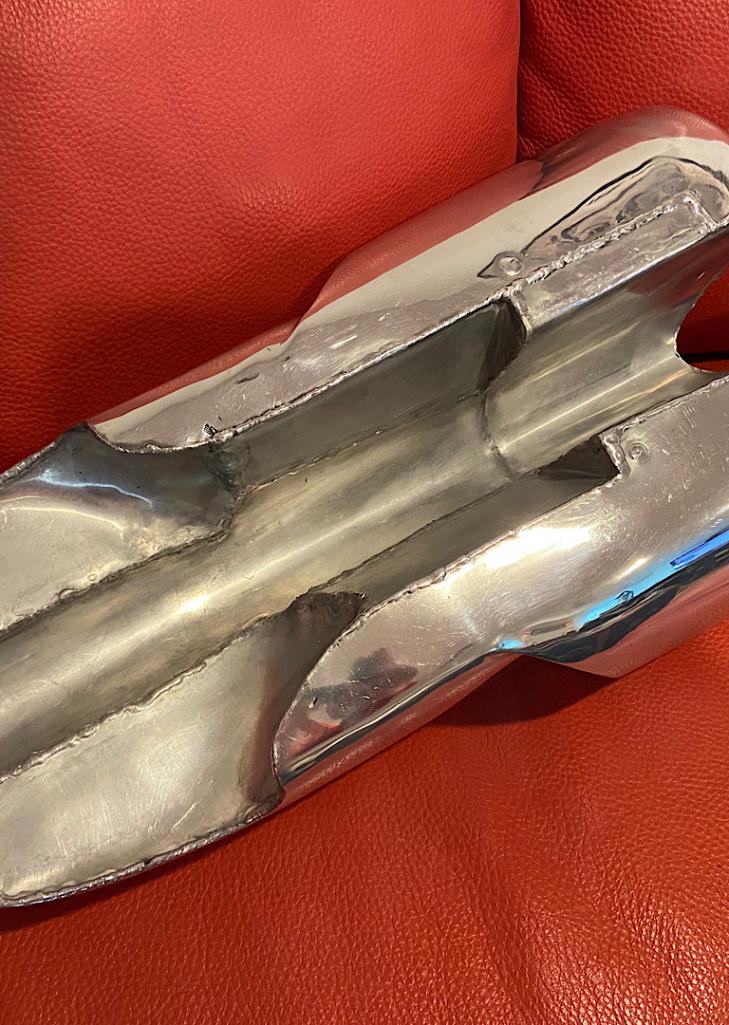 MIG is a lot easier to learn and to lay down a serviceable weld for those not inclined to learn TIG and gas techniques that need simultaneous control of heat and filler material. TIG allows for more control over the weld puddle but with that comes more opportunity to screw things up. Contaminated electrodes & lots time to contemplate the meaning of life while grinding electrodes. Need lots of different electrodes, cup sizes and gas lenses, collets. It all adds adds up -$ cha ching. Overall TIG is a slow welding process but can produce beautiful welds. TIG allows for overhead welding without being in a shower of MIG sparks. To TiG out of position on a car, you’re going to quickly find that you need an amptrol up on the torch. Air cooled TiG torches will quickly get too hot to handle if you are welding at high current (welding copper or thick aluminum). TIG welded copper: 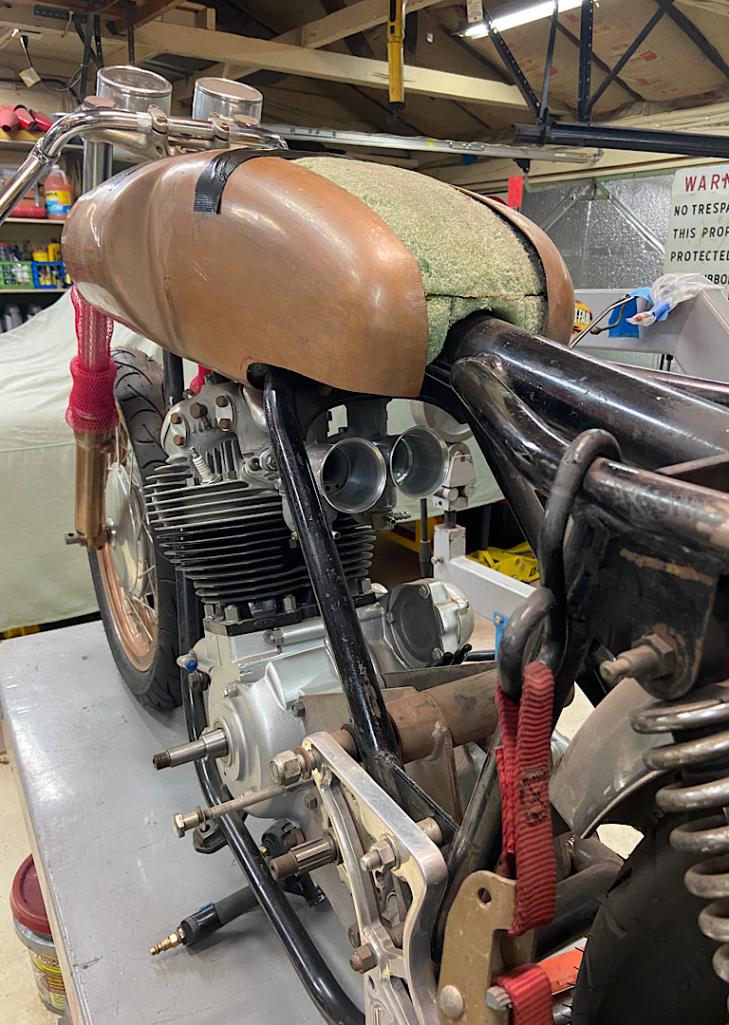 MIG for the win for the average home shop. Serviceable flux core weld made in freezing cold weather with a breeze. Fused thin wall galvanized pipe with a piece thick cold rolled steel that was machined. Done with an old 90s era Italian 110v MIG with only 4 finite heat ranges. Easy. 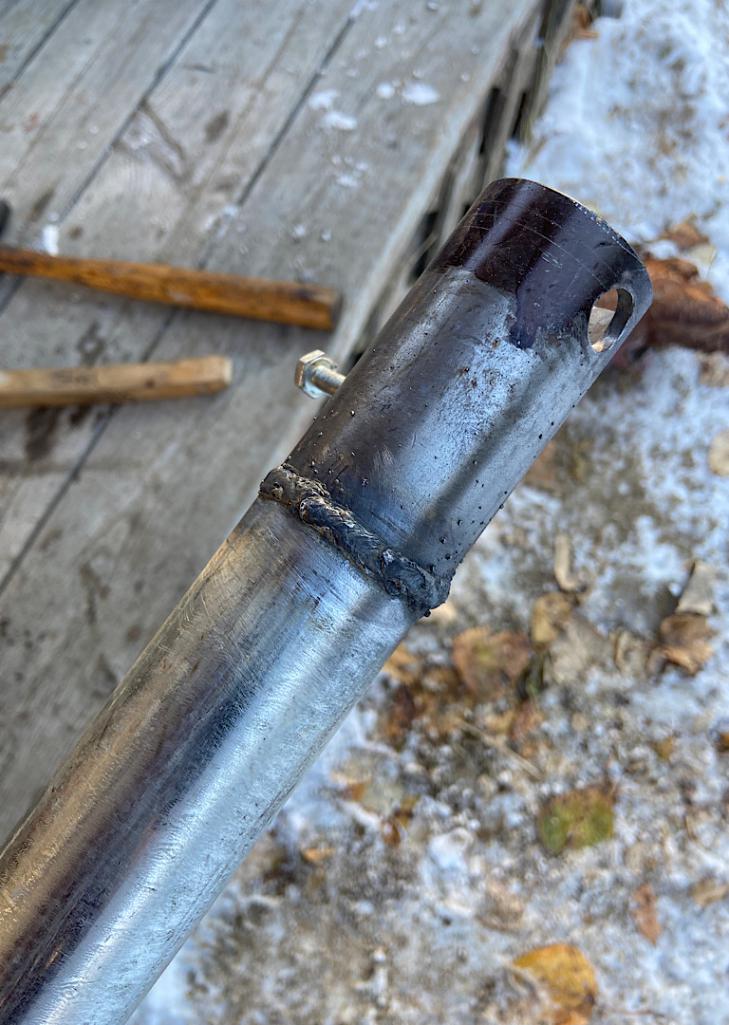 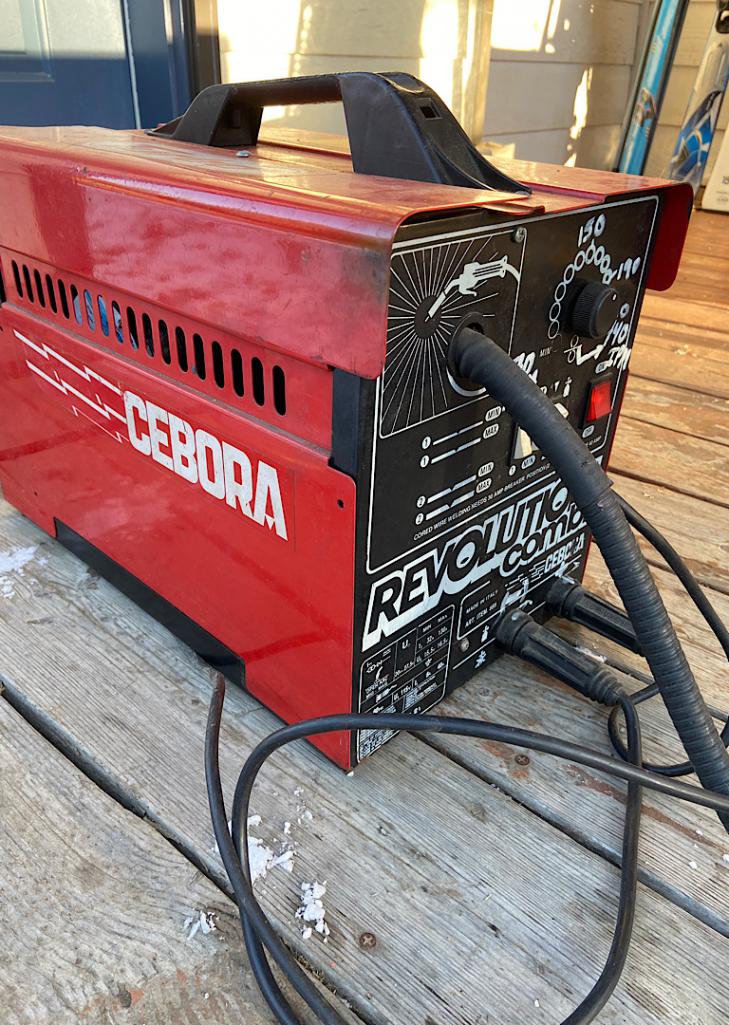 It really is all about choosing the best welding process for the job at hand. For the cost of a good TIG set up and torch amptrol you could buy an amazing MIG rig, a set of really nice gas torches, fluxes, and high end goggles for welding aluminum and still have spare change. Then you can focus on learning welding skills that will later pay off if you find you still want to TIG. |
| nathanxnathan |
 Nov 29 2022, 01:29 AM Nov 29 2022, 01:29 AM
Post
#13
|
|
Member   Group: Members Posts: 294 Joined: 16-February 18 From: Laguna Beach, CA Member No.: 21,899 Region Association: Southern California |
I think where/what you need to weld is the deciding factor. If for instance you have 2 layers, there's going to be oxidation and old primer between, and tig doesn't like it.
I've been working on a front cross panel replacement. A body shop had done a rotten job of not only installing a replacement piece, but also taking off the original accident damaged piece. Here's the area around the bumper bracket where they drilled the spot welds. 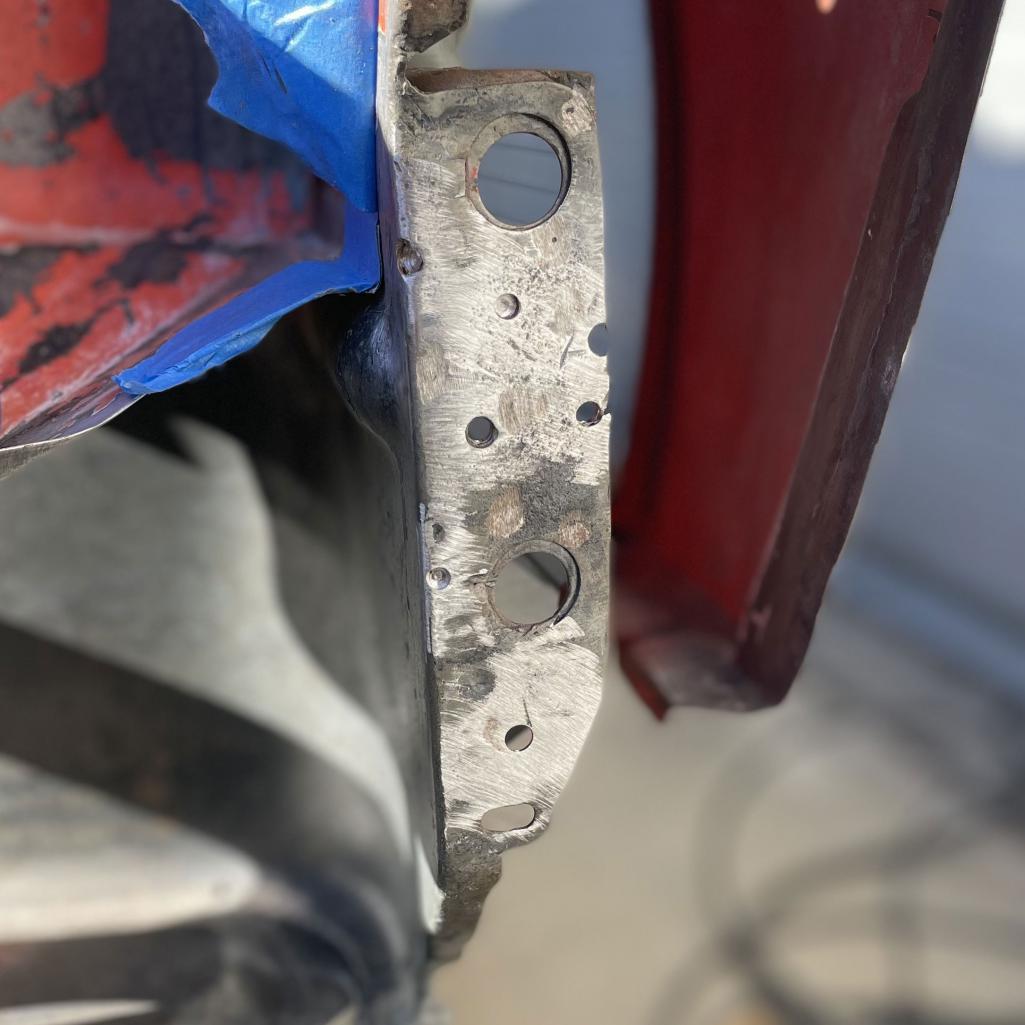 I tried to tig the holes, but the contamination was a nightmare. It kept blowing up and messing up my electrode. I had to grind out the porosity it caused trying to fix the bit at the corner. Once it gets contaminated, you have to grind it all out. The bubbles will mess up any weld you try to patch it all with. There's just no way to fix this with a tig without drilling the spot welds to remove the whole bracket, and getting it to a single layer that you can clean behind.. I ended up using the mig. Mig doesn't care, just power through, grind them down, burnish and it's good. 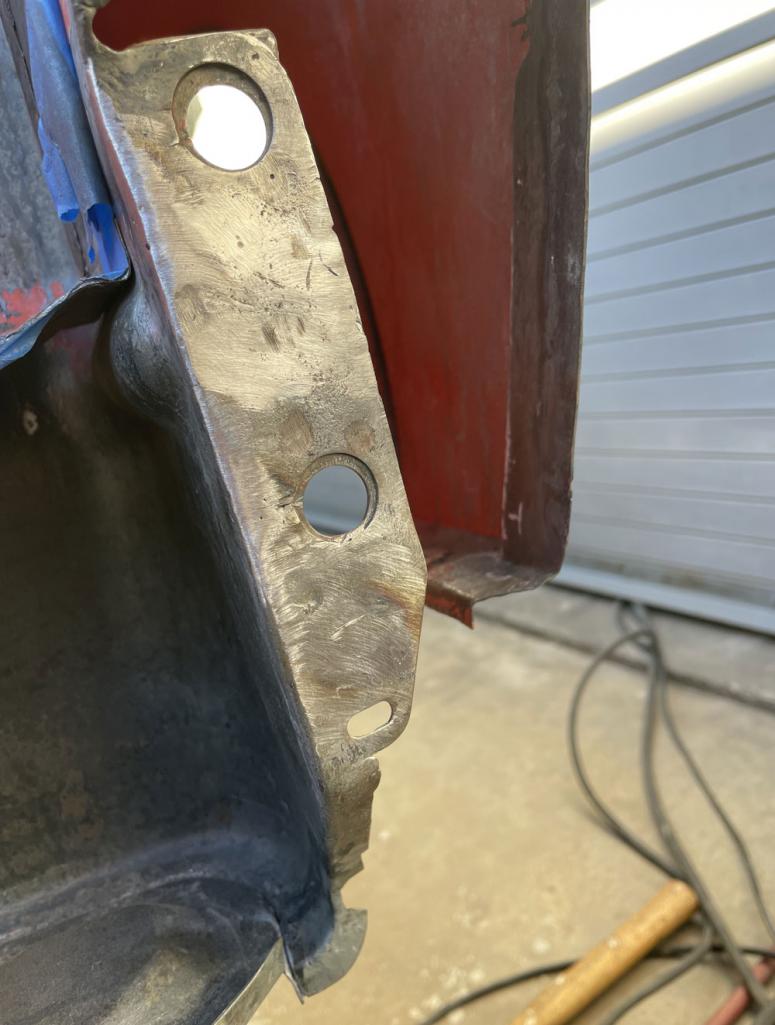 For clean work, tig rules. The replacement cross panel I got was pretty rough itself. The end was missing, went with the fender to a different car. And the inevitable damage of removing it, fixing those holes in prep for spot welding it back in, tig is so much more controllable and the weld is more workable. Here's the inside driver side of the replacement panel where I started. 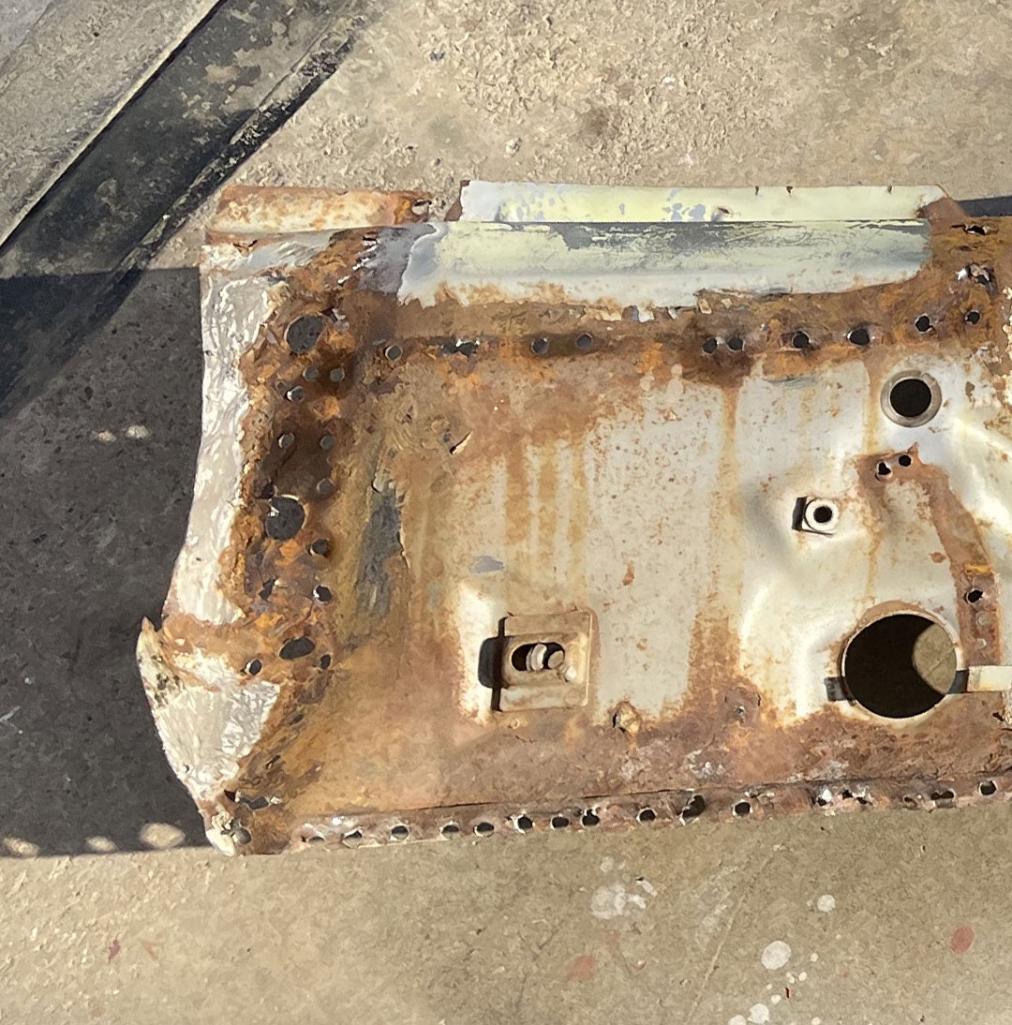 Then bead blasted, holes filled, planished, burnished, treated with Oshpho. The end of the previously installed panel is Frankensteined to it. This is the front of the same part after. 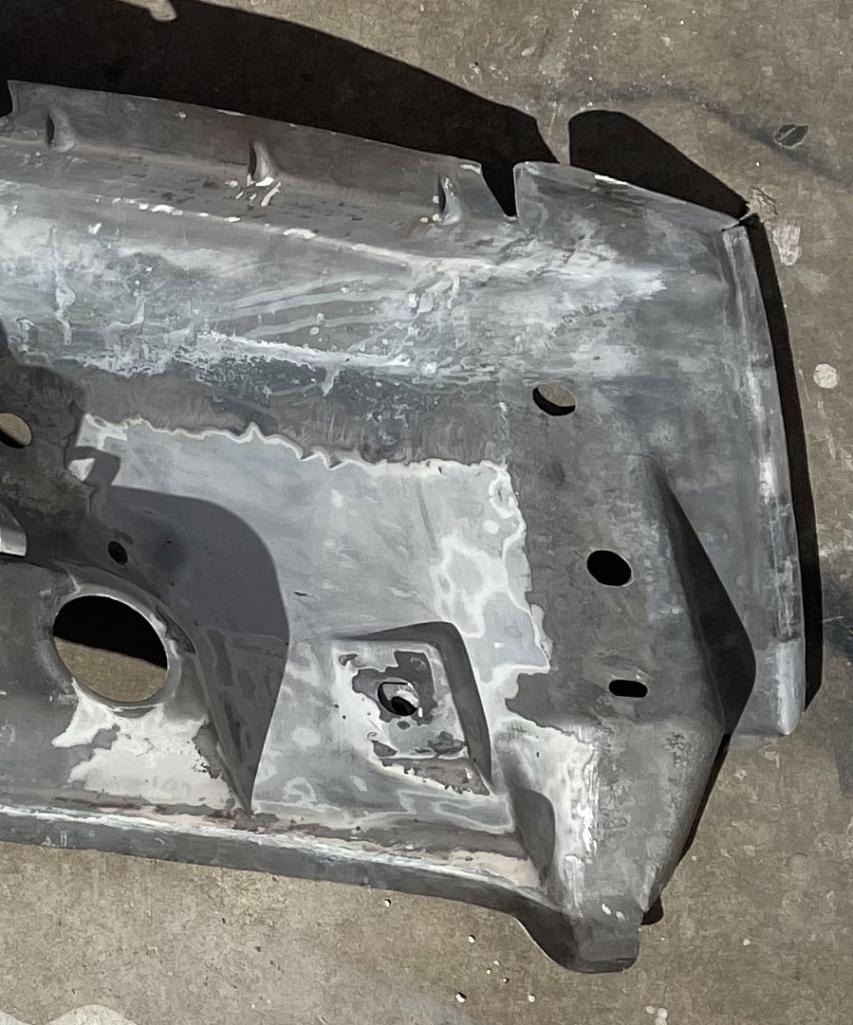 If you can only get one, I'd say the mig is more versatile. |
| Superhawk996 |
 Nov 29 2022, 01:55 AM Nov 29 2022, 01:55 AM
Post
#14
|
|
914 Guru      Group: Members Posts: 7,340 Joined: 25-August 18 From: Woods of N. Idaho Member No.: 22,428 Region Association: Galt's Gulch 
|
@nathanxnathan
Try this TIG technique on dual layer panels: It’s often the air trapped between the panels rapidly expanding that spits out of the weld puddle causing the electrode contamination - not the corrosion contamination between the panels. Try pre heating the zone around the weld with the torch and light current before attacking. This heats the air between the panels and gives it time to expand. Then go in hot quickly to establish a puddle, then feed filler quickly and heavily. Sometimes I would need to downsize filler rod to avoid having too much filler going into the puddle at one time and sucking the heat out of the puddle or resulting in too much weld build up. It sort of mimics the MIG process. Not fool proof but it usually worked for me. TIG welded all of my 914 chassis sheet metal replacement. Sometimes up to 3 layers. |
| nathanxnathan |
 Nov 29 2022, 12:22 PM Nov 29 2022, 12:22 PM
Post
#15
|
|
Member   Group: Members Posts: 294 Joined: 16-February 18 From: Laguna Beach, CA Member No.: 21,899 Region Association: Southern California |
@nathanxnathan Try this TIG technique on dual layer panels: It’s often the air trapped between the panels rapidly expanding that spits out of the weld puddle causing the electrode contamination - not the corrosion contamination between the panels. Try pre heating the zone around the weld with the torch and light current before attacking. This heats the air between the panels and gives it time to expand. Then go in hot quickly to establish a puddle, then feed filler quickly and heavily. Sometimes I would need to downsize filler rod to avoid having too much filler going into the puddle at one time and sucking the heat out of the puddle or resulting in too much weld build up. It sort of mimics the MIG process. Not fool proof but it usually worked for me. TIG welded all of my 914 chassis sheet metal replacement. Sometimes up to 3 layers. @Superhawk996 I will give it another try when I work on the other side this weekend. I do preheat quite a bit with just a little bit of pedal. I tried to fill the lower hole that goes through both layers. I drilled it slightly larger to get the rust from the edges, and backed it with copper. The layers are tight there, very little space between. I then heat the center of the copper for about 8–10 seconds as the fill rod will go toward the heat. I have found that if you can get the smallest bit of weld to stick to the piece and then weld to that... it's like there's a threshold of dirtiness that you can't go past or it all flairs up. I've managed it in the past, but just as often I need 1 more second to finish the weld and bam, it all blows up and there's a huge blob of weld stuck to your electrode. I went through a whole electrode just grinding off blobs trying to fill 2 holes there before I brought out the mig. |
| Superhawk996 |
 Nov 29 2022, 12:46 PM Nov 29 2022, 12:46 PM
Post
#16
|
|
914 Guru      Group: Members Posts: 7,340 Joined: 25-August 18 From: Woods of N. Idaho Member No.: 22,428 Region Association: Galt's Gulch 
|
@nathanxnathan
I hear ya. (IMG:style_emoticons/default/happy11.gif) 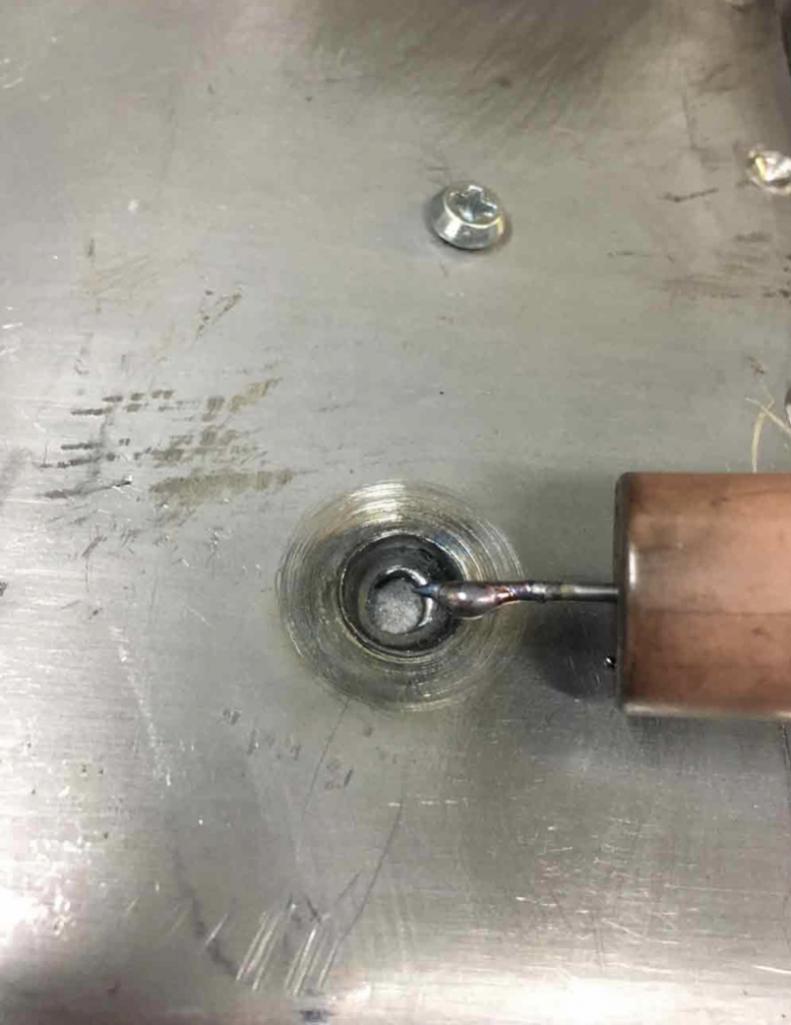 Even in this case - all 3 layers were new and clean but still had major episodes of splattering weld puddle that contaminates the electrode. Good example where TIG was not the best tool for the job. Would have been much better to have done this with MIG but I didn’t have my MIG available. FYI - my solution here was to downsize the electrode to 0.020” (pulsed at 2-3 Hz) to get in the hole down to 1st layer get the puddle between 1st and 2nd layer started then feed 0.023 MIG wire in as the filler and fed it in fast to get the inner layer fused. Then let it cool - repeat for 2nd and 3rd layer. Took way too much time for each puddle weld. (IMG:style_emoticons/default/headbang.gif) |
| Brett W |
 Nov 29 2022, 01:02 PM Nov 29 2022, 01:02 PM
Post
#17
|
|
Advanced Member     Group: Members Posts: 2,859 Joined: 17-September 03 From: huntsville, al Member No.: 1,169 Region Association: None 
|
I hate trying to TIG dirty or questionable steel when plug welding. Plus the MIG is so much faster. That said I have TIG welded parts with weld through primer on the bench and then tried it on the car and get the explosion. MIG doesn't seem as finicky with the weld through primers and such.
Peter, that motorcycle tank looks good. The nice thing with those gas welds, they can be ground and smoothed so easily since they aren't as hard as TIG welds. (not that you need to as you can't see them when they tank is installed) |
| 930cabman |
 Nov 29 2022, 01:23 PM Nov 29 2022, 01:23 PM
Post
#18
|
|
Advanced Member     Group: Members Posts: 4,236 Joined: 12-November 20 From: Buffalo Member No.: 24,877 Region Association: North East States 
|
If it is either/or, I would go for a Lincoln 140, 110v MIG. Simple, reasonably inexpensive and the Lincoln name speaks for itself. get the bottle of gas too.
|
| Ishley |
 Nov 29 2022, 01:45 PM Nov 29 2022, 01:45 PM
Post
#19
|
|
Member   Group: Members Posts: 264 Joined: 4-October 21 From: Clarendon Hills Il Member No.: 25,957 Region Association: Upper MidWest 
|
You can get a combo unit that does both. I mig weld. If you have patience and you keep things cool... you can do just about anything with steel, You need a Gas unit... i wouldn't do flux core... because of the splatter.
|
| mb911 |
 Nov 29 2022, 04:07 PM Nov 29 2022, 04:07 PM
Post
#20
|
|
914 Guru      Group: Members Posts: 7,625 Joined: 2-January 09 From: Burlington wi Member No.: 9,892 Region Association: Upper MidWest 
|
Oxy Acetylene. It will take some time to learn the finesse, but it grinds easier, it hammers out easier and doesn't make a hard spot, plus its easier on tools. It works on aluminum and steel, but it takes a bit of fine tuning. I have welded aluminum sheet, then hammered it to death in an attempt to break the weld or the panel. It hammered out nice and smooth. If you use base material you can actually polish the material and not see the weld. That said, I use MIG with gas (no other way to MIG weld sheetmetal) or TIG weld it. I haven't done any sheetmetal butt welds recently, but was told to use almost no shielding gas with the TIG welds, meaning no big cup, no shiney welds, etc. #4 or #5 cup, the weld will look terrible, but it will finish nicely as it doesn't get as hard as fully shielded weld. Will be testing this soon. Looking forward to testing this and then running it through my English wheel. Ugh on the shielding gas and cup recommendations. That is not correct as you want to use the largest cup possible for the application. This is coming from a national welding education instructor and a former aviation TIG welder. All other comments I agree with. |
  |
1 User(s) are reading this topic (1 Guests and 0 Anonymous Users)
0 Members:

|
Lo-Fi Version | Time is now: 31st August 2025 - 07:18 AM |
Invision Power Board
v9.1.4 © 2025 IPS, Inc.









